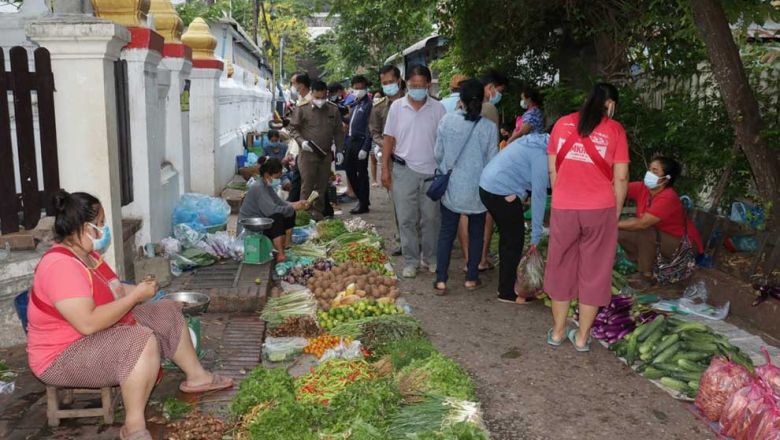Herbal Indian gooseberry juice maker eyes Chinese market
Herbal Indian gooseberry juice maker eyes Chinese market
A local drink marketed as “Nam sakad mark kharmpom” or ‘Indian gooseberry juice' is looking forward to expanding into the Chinese market after recording growing domestic sales.
Owner of the herbal drink company Mr Mixay Mounsan explained recently that overall sales grew from 15 tonnes in 2013 to 20 tonnes last year, and he expected production to reach 30 tonnes by the end of this year.
He put the growth down to people caring more about their health, and said there were further growth opportunities as well as higher competition for herbal drinks in store once Laos entered the upcoming Asean Economic Community.
The herbal drink is based on a Indian gooseberry variety different to those consumers usually associate with eating or cooking.
He believed Laos would see other herbal drink brands entering the market as people's incomes as well as interest in health continues to grow each year.
Mr Mixay said the juice he bottled was 100 percent natural concentrate and the production process was clean and safe having gained recognition from the Ministry of Health's Food and Drug Department. It was also certified under the ‘One District, One Product' scheme in 2013.
These factors guaranteed its quality for export, but packaging still needed improvement, he added.
He was looking forward to educating potential consumers in the Chinese market, after some companies there expressed interest in importing his herbal drink.
Mr Mixay said he had also accepted sales enquiries from other Asean countries, but they already have numerous herbal drinks available, making it challenging to gain market penetration, and other nations also encourage their own domestic products.
However, he continues to promote his product at ‘One District, One Product' fairs in neighbouring countries, aiming to promote the Lao herbal drink in the hope he will be able to achieve market acceptance.
At present Mr Mixay makes two kinds of herbal Indian gooseberry products, one a drink and the other a tea, distributed through pharmacies in 15 provinces with plans to further expand domestic marketing over the next two years.
















